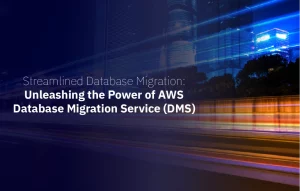Introduction
In a world where efficiency and scalability are paramount, the migration from traditional on-premises servers to a serverless architecture in Amazon Web Services (AWS) is nothing short of a digital revolution. In this blog, we will explore the multitude of advantages and benefits that organizations can reap by migrating to a serverless architecture on AWS.
The Challenge of On-Premises Servers
Maintaining on-premises servers is a challenging endeavour. It often involves the following complications:
- Resource Allocation: Procuring, provisioning, and managing physical servers can be a time-consuming and resource-intensive process.
- Scalability: Adapting to fluctuating workloads can be a logistical nightmare, often resulting in overprovisioned or underutilized hardware.
- Operational Overhead: Routine maintenance, patch management, and ensuring high availability demands a dedicated IT team.
- Costs: High capital expenditures, maintenance costs, and energy expenses are recurring financial burdens for on-premises server infrastructure.
The Migration to a Serverless Architecture in AWS
Migrating to a serverless architecture on AWS offers a transformative solution to the challenges posed by on-premises servers. Let’s delve into the many ways in which this migration can benefit your organization:
- Cost Optimization
Serverless computing in AWS operates on a pay-as-you-go pricing model. This means you only pay for the actual computing resources consumed. There are no upfront infrastructure costs, and the cloud provider handles server provisioning, reducing operational overhead. This results in substantial cost savings, making serverless a cost-effective solution.
- Scalability
Serverless architectures in AWS provide seamless and automatic scalability. They can dynamically adjust to accommodate varying workloads, ensuring that your applications perform optimally regardless of traffic fluctuations. This scalability eliminates the need for manual resource allocation and minimizes the risk of overprovisioning.
- Operational Efficiency
With serverless, your IT team can shift their focus from server management to higher-value tasks, such as application development and business strategy. AWS manages server provisioning, maintenance, and security, allowing your team to work on innovation and product development.
- Reduced Downtime
Serverless applications in AWS are designed for high availability. AWS Lambda, for instance, automatically replicates your code across multiple availability zones, minimizing the risk of downtime due to hardware failures or natural disasters. This level of reliability ensures uninterrupted service to your customers.
- Rapid Development and Deployment
Serverless architectures enable faster development cycles. Developers can focus on writing code and deploying features without having to manage server infrastructure. This leads to quicker time-to-market for new products and services, keeping your organization competitive in a rapidly evolving landscape.
- Event-Driven Architecture
Serverless computing is inherently event-driven, responding to events in real time. This is ideal for applications that require immediate responses, such as data processing, image resizing, or chatbots. AWS Lambda and other serverless services can be triggered by various events, improving the agility of your applications.
- Simplified Microservices
Serverless can facilitate the creation of microservices, where each function operates independently. AWS Step Functions can help coordinate these functions, simplifying complex workflows and making them more manageable.
- Security and Compliance
AWS offers robust security and compliance features, ensuring that your serverless applications meet industry standards and regulatory requirements. Security responsibilities are shared with AWS, and you can focus on application-specific security measures.
Conclusion
Migrating from on-premises servers to a serverless architecture in AWS is not just a technological shift; it’s a strategic move that can redefine how your organization operates. The benefits are substantial: cost optimization, effortless scalability, operational efficiency, reduced downtime, rapid development, event-driven architecture, simplified microservices, and enhanced security. By embracing serverless in AWS, organizations can unlock the full potential of the cloud and focus on innovation and growth, unburdened by the constraints of traditional infrastructure. The future of your organization is in the cloud—go serverless with AWS and discover the path to digital success.






